You are here
Izmukshir Fortress.
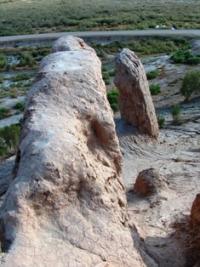
Excursion to ancient settlement Izmukshir.
“I've known rivers:
I've known rivers ancient as the world and older than the flow of human blood in human veins. My soul has grown deep like the rivers”
Langston Hughes.
Trips across Kunya-Urgench.
Izmukshir ancient settlement (Az-Zamakshari, is located in the northeastern part of the Zmukshirkum sands, 6.9 kilometers southeast of the Sharlauk village, 23.1 kilometers southwest of the city of Dashoguz, 5.7 kilometers to the north west of the village of Varan in the Goroglyn etrap of the Dashoguz velayat.
Izmukshir (Zamakhshar) - the ruins of a medieval city, in terms of the fortress walls encompass an oval with a broken outline (about 500 x 650 meters), there was probably a suburb outside. In the south and north, two gates are clearly visible, flanked by round towers.
The central street passed between them, divided by several transverse lanes. City buildings turned into swollen hills, and the fortress walls were badly destroyed, but numerous towers remained in them: oval, round, outboard, detached, but connected to the wall by jumpers, gate structures.
Two periods of the city's existence are distinguished - from antiquity to the IXth - XIth centuries. and in the Golden Horde time (XIII - XIV centuries). It was a typical trade and craft center of Khorezm, information about which is contained in a number of medieval Arabic and Persian written sources.
Izmukshir is the ancient city of Zamakshar, the birthplace of the great philosopher of the Xth century Az-Zamakshari. Some of the largest and most picturesque fortress ruins of the Khorezmshah empire have been preserved on its territory.
Izmykshir today is better known for the fact that in 1075 an outstanding Turkmen scientist - encyclopedist, philosopher, theologian, lawyer, philologist and writer of the 11th - 12th centuries Mahmyt Zamakhshary was born here in 1075 - the author of about 60 works and scientific treatises that made a significant contribution to the development of world science.
Izmykshir was one of the largest settlements of its time. Information about this city is contained in a number of medieval Arabic and Persian written sources. He was known in many cities of the world, caravan routes ran here and merchants from different parts of the world came here, famous scientists and poets lived and worked here.
In 1219, Mongol troops attacked Khorezm. How the assault took place is not known for certain. But looking at the surviving fragments of the fortress wall with towers and observation posts, one can imagine how the defenders of the fortress warned the residents of nearby settlements about the approach of an enemy army.
Keeping the secrets of the heroic past, the Izmykshir fortress is revered among the people, first of all, as the birthplace of the outstanding scientist Mahmyt Zamakhshara, whose name is on a par with such great thinkers of the Middle Ages as Ibn Sina, Al-Khwarizmi, Al-Biruni.
From childhood, Mahmyt al-Zamakhshary showed interest in sciences. He studied at the madrasahs of Bukhara and Urgench. He was in the service of Khorezshah Anushtegin, who gathered the best scientists around him. Zamakhshary was engaged not only in science, but also wrote poetry.
Often he was invited to big councils, where important state affairs were decided. He was even called Fakhr Al-Khorezm, which means “the pride of Khorezm”. But at the age of 40, Zamakhshary became very ill and took an oath that if he recovered, he would no longer serve the Khorezmshahs, but would take up teaching and science.
The scientist kept his word and, after recovering, went to Arabia. On the way, he met with famous scientists, and wherever he taught, he enjoyed authority. For his talent, high education and achievements in science, he was given the honorary title of Al-Allama (the greatest scientist).
Experts say that the remains of Izmykshir that have survived to this day are a classic example of medieval Turkmen architecture. The mausoleum of the great scientist, which has become one of the most popular pilgrimage sites, is located not far from the fortress itself.
Today, numerous tourists can admire the fortress walls, fragments of adobe towers and defensive ditches that surround the city fortress. Towers and gateways are clearly visible in the fortress walls. It is believed that the central street of the city once passed between the north and south gates with round towers, the buildings of which have now turned into hills.
There is silence inside the fortress. Only occasionally will the wind touch the branches of saxaul, disturb the undersized bushes and drive the gray dust of centuries over the hills. There is no sense of lifelessness here it seems that the city, tired of prying eyes, covered itself with a sand cloak.
One has only to get off the paths laid inside the fortress, as you see that almost the entire territory of the fortress is dotted with multi-colored fragments of ceramic dishes or facing plates covered with majolica, fragments of either mica or molten glass.
They, like the majestic fortress walls, are silent witnesses of the great history of Izmykshir.
Geographic coordinates of the Izmukshir ancient settlement: N41 ° 43'56.71 "E59 ° 43'08.25"
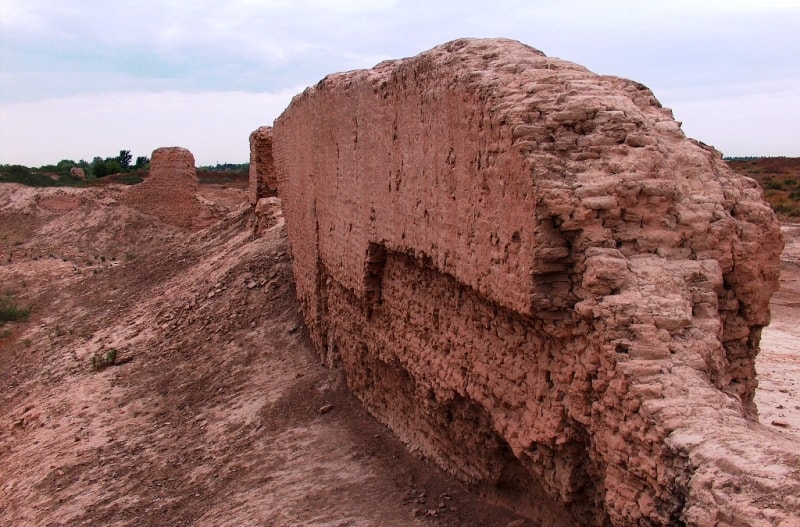
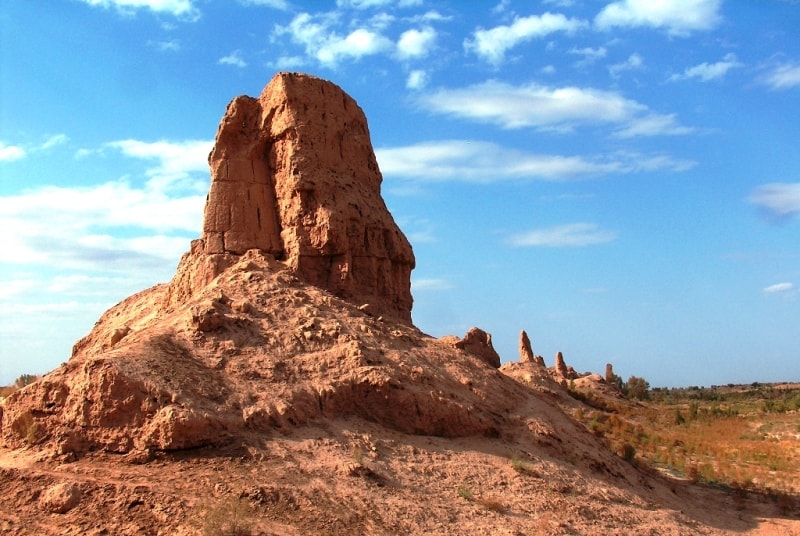
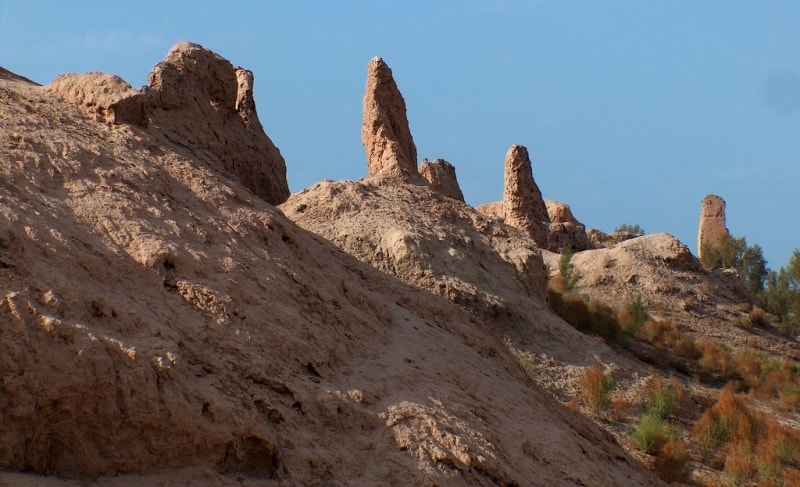
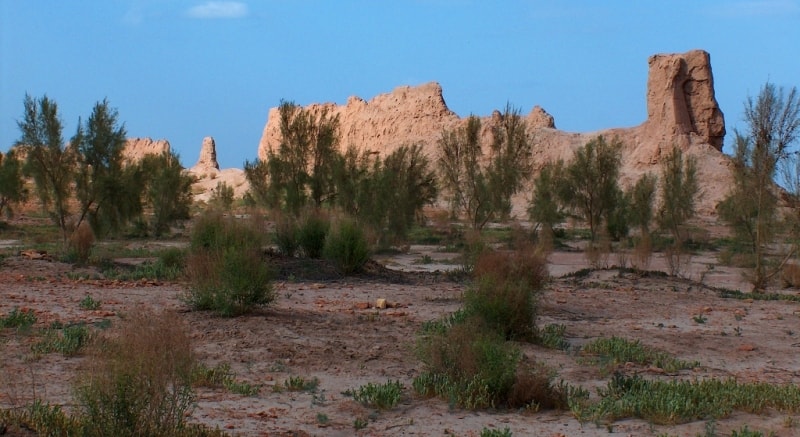
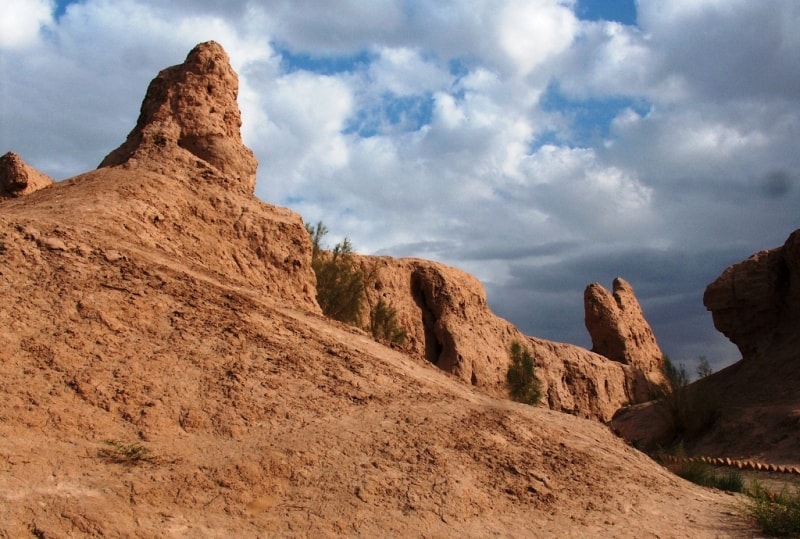
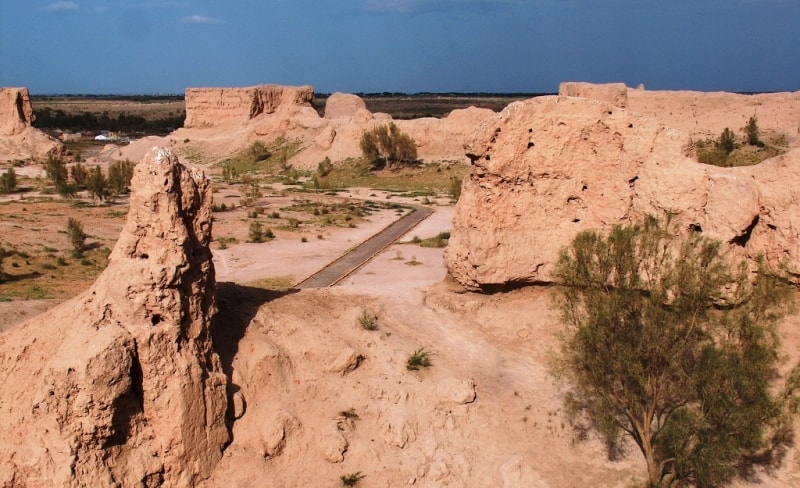
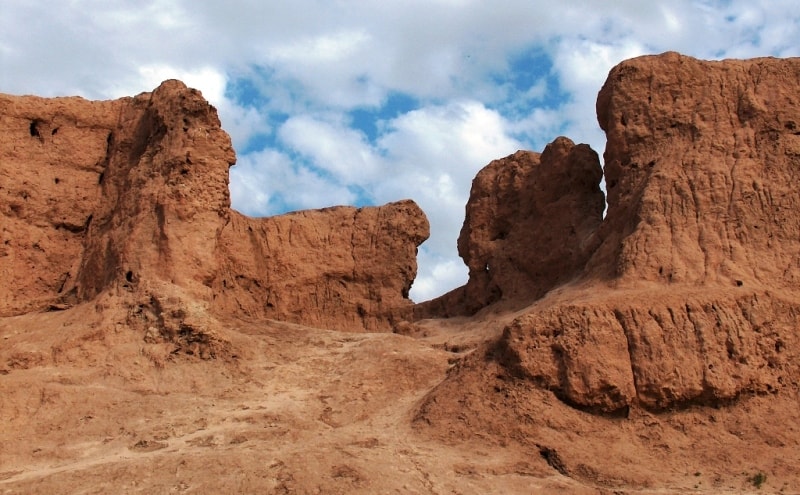
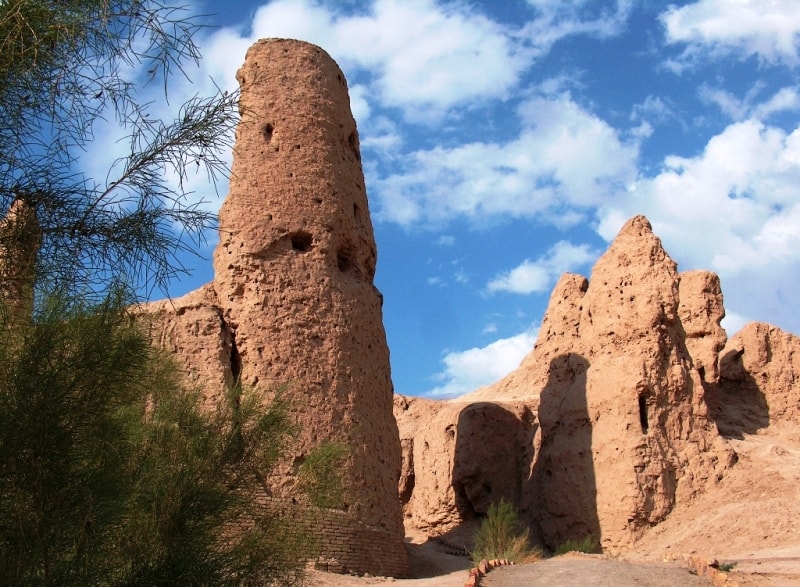
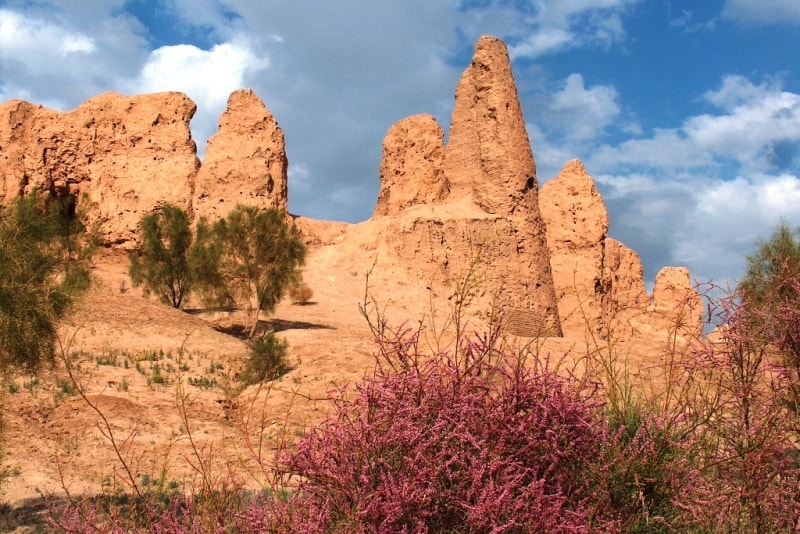
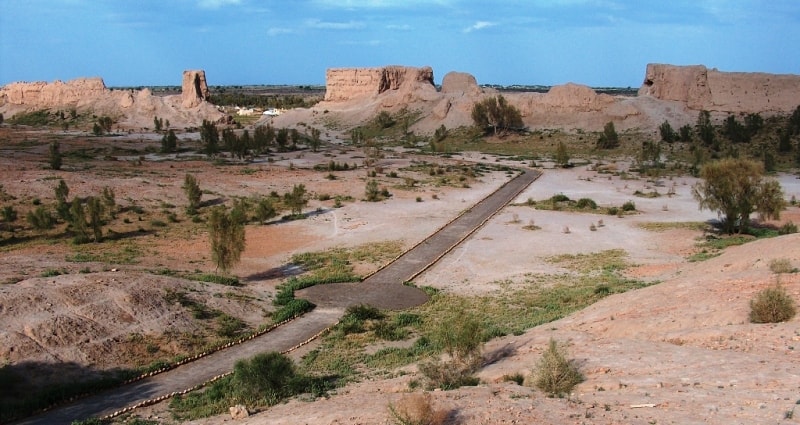
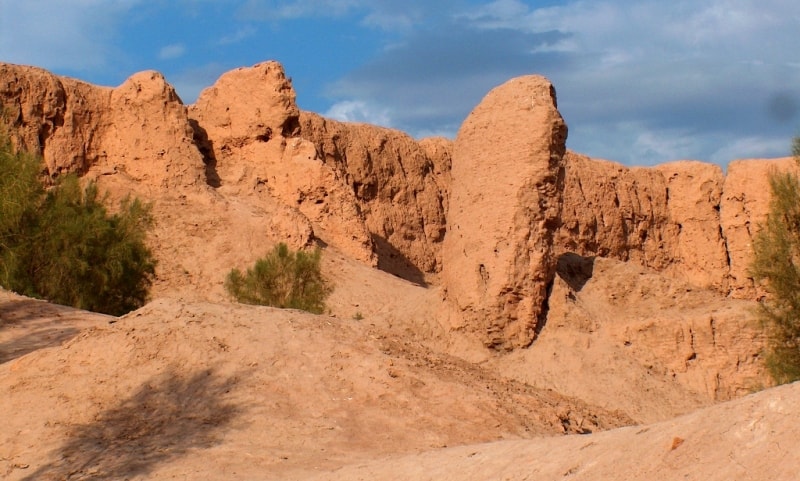
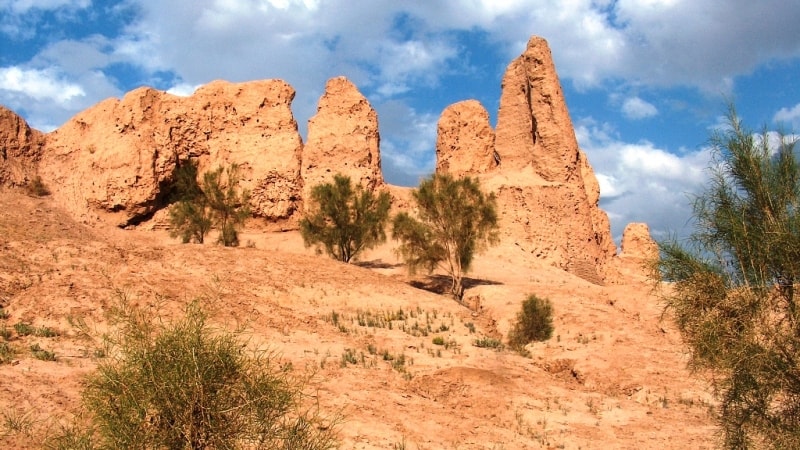
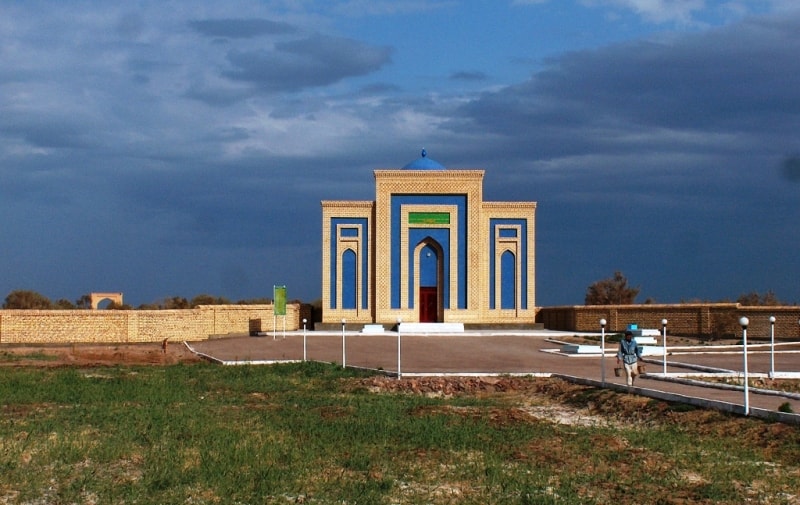

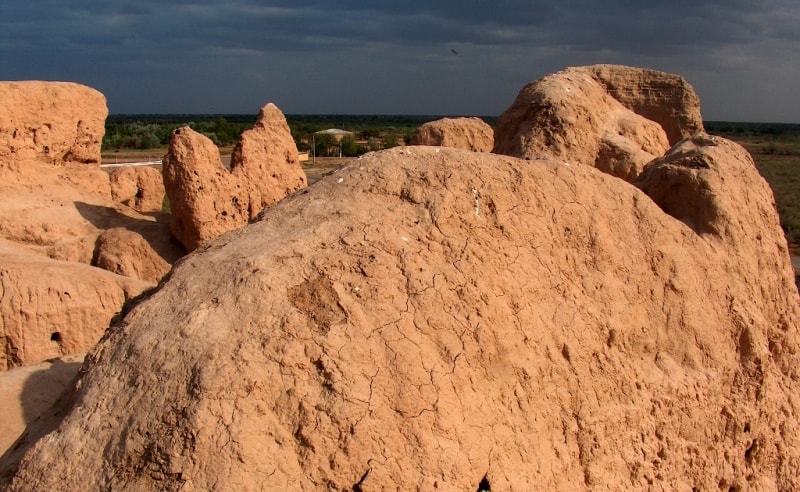
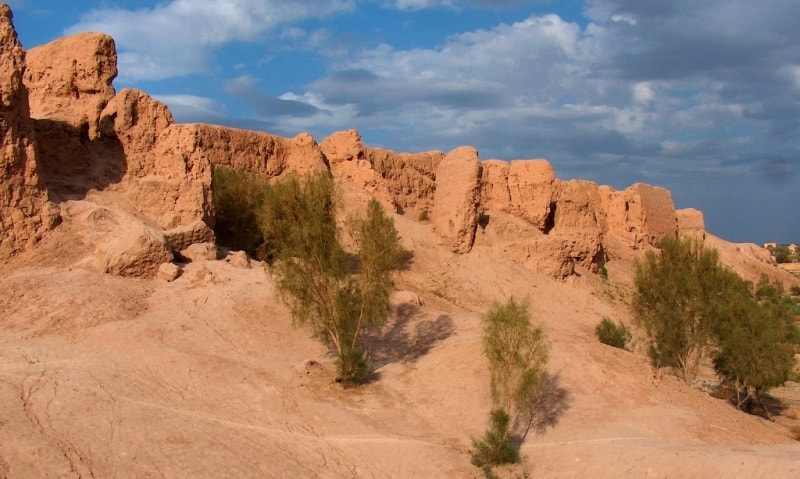
Authority:
On materials of information department of the State committee of Turkmenistan on tourism and sport. "Religious and spiritual monuments to Central Asia". Author M. Hashimov. Saga publishing house, 2001.
Photos by
Alexander Petrov.







